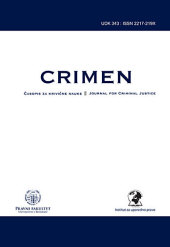TAKSONOMIJE KONCEPATA BORBE PROTIV TERORIZMA
TAXONOMY OF THE CONCEPT OF COUNTERTERRORISM
Author(s): Predrag PavlićevićSubject(s): Security and defense
Published by: Правни факултет Универзитета у Београду
Keywords: counterterrorism; deterrence; counterinsurgency; conciliation;
Summary/Abstract: This paper presents the classification and typology of policies, strategies, doctrines, approaches or models of combating terrorism. The paper indicates the ways of conceptualising by presenting taxonomies and refers to some modalities of evaluation of counterterrorism concepts (CT concepts). The methodological justification of taxonomy in research of the state model of countermeasures and/or strategic responses to terrorism is confirmed, as also is the methodological premise that – despite its ability to provide a more systematic picture of this problem area – taxonomy remains a methodological instrument of analytical description, and that a theory may originate in taxonomy only if the research reaches the system of propositions that allow the interpretation of causal relationships and scientific foresight. Models of response to terrorism are often presented via dichotomies as ‘on the level of certain states and group, at the level of various regional mechanisms for cooperation’; counterterrorism and antiterrorism; short-term and long-term response; reactive and proactive response. Contents and diverse aspects of dichotomies overlap when comparing elements that define soft and hard approach, the war model and the criminal justice model, a response that is marked as ‘retaliatory action’ and ‘prevention actions’, or ‘conciliatory’ and ‘coercive’ response. Featured dichotomies, however methodologically useful, lead to the conclusion that, when analyzing the modalities of combating terrorism, it is necessary to bear in mind the other (broader) criteria and indicators. This is the reason to develop a mixed or intermediate types of responses or design tripartite classification (which is not surprising because they often arise from a dichotomy in which members positively determined). Classifications reflect the theoretical perspective and approach to the analysis of a specific problem, and then might follow widely accepted models. Review of classifications of policies and counterterrorism strategies allows for consideration of basic premises, features and modalities of their implementation – according to priorities, areas, or considerations of ways of actions for the realisation of specific objectives – which confirms the methodological justification of classification also in this research field.
Journal: CRIMEN - časopis za krivične nauke
- Issue Year: 2014
- Issue No: 2
- Page Range: 212-230
- Page Count: 19
- Language: Serbian

